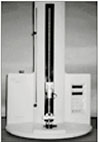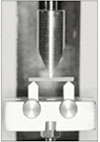1. Feilzer AJ, de Gee AJ, Davidson CL. Quantitative determination of stress reduction by flow in composite restorations. Dent Mater. 1990. 6:167–171.

2. Uno S, Shimokobe H. Contraction stress and marginal adaptation of composite restorations in dentinal cavity. Dent Mater J. 1994. 13:19–24.

3. Davidson CL, Van Zeghbroeck L, Feilzer AJ. Destructive stresses in adhesive luting cements. J Dent Res. 1991. 70:880–882.

4. Davidson CL, de Gee AJ, Feilzer AJ. The competition between the composite-dentin bond strength and the polymerization contraction stress. J Dent Res. 1984. 63:1396–1399.

5. Feilzer AJ, de Gee AJ, Davidson CL. Curing contraction of composites and glass- ionomer cements. J Prosthet Dent. 1988. 59:297–300.
6. Bowen RL. Adhesive bonding of various materials toward tooth tissues : VI. forces developing in direct filling materials during hardening. J Am Dent Assoc. 1967. 74:439–445.

7. Davidson CL, de Gee AJ. Relaxation of polymerization contraction stresses by flow in dental composites. J Dent Res. 1984. 63:146–148.

8. Feilzer AJ, de Gee AJ, Davidson CL. Setting stresses in composite resin in relation to configuration of the restoratives. J Dent Res. 1987. 66:1636–1639.

9. Hegdahl T, Gjerdet NR. Contraction stresses of composite resin filling materials. Acta Odontol Scand. 1977. 35:191–195.

10. Bowen RL, Nemoto K, Rapson JE. Adhesive bonding of various materials to hard tooth tissues : forces developing in composite materials during hardening. J Am Dent Assoc. 1983. 106:475–477.
11. Kemp-Scholte CM, Davidson CL. Marginal sealing of curing contraction gaps in class V composite resin restorations. J Dent Res. 1988. 67:841–845.

12. Alster D, Feilzer AJ, de Gee AJ, Davidson CL. Polymerization contraction stress in thin resin composite layers as a function of layer thickness. Dent Mater. 1988. 13:146–150.

13. Feilzer AJ, de Gee AJ, Davidson CL. Setting stresses in composites for two different curing modes. Dent Mater. 1993. 9:2–5.

14. Feilzer AJ, Dooren LH, de Gee AJ, Davidson CL. Influence of light intensity on polymerization shrinkage and integrity of restoration - cavity interface. Eur J Oral Sci. 1995. 103:322–326.

15. Lutz F, Krejci I, Barbakow F. Quality and durability of marginal adaptation in bonded composite restorations. Dent Mater. 1991. 107–113.

16. Mehl A, Hickle R, Kunzelmann KH. Physical properties and gap formation of light cured composites with and without 'soft start polymerization'. J Dent. 1997. 25:321–330.

17. Feilzer AJ, de Gee AJ, Davidson CL. Relaxation of polymerization contraction shear stress by hygroscopic expansion. J Dent Res. 1990. 69:36–39.

18. Braem M, Davidson CL, Vanherle G, Van Doren V, Lambrechts P. The relationship between testy methodology and elastic behavior of composites. J Dent Res. 1987. 66:1036–1039.

19. Choi KK, Condon JR, Ferracane JL. The effects of Adhesive Thickness on Polymerization contraction Stress of Composite. J Dent Res. 2000. 79(3):812–817.

20. Munksgaard EC, Hansen EK, Kato H. Wall-to-wall polymerization contraction of composite resins versus filler content. Scand J Dent Res. 1987. 95:526–531.

21. Iga M, Takeshige F, Ui T, Torii M, Tsuchitani Y. The relationship between polymerization shrinkage measured by a modified dilatometer and the inorganic filler content of light-cured composites. Dent Mater. 1991. 10:38–45.

22. Kim KH, Park JH, Imai Y, Kishi T. Microfracture Mechanisms of Dental Resin Composites Containing Spherically-shaped Filler Particles. J Dent Res. 1994. 73(2):499–504.

23. Labella R, Lambrechts P, Van Meerbeek B, Vanherle G. Polymerization shrinkage and elasticity of flowable composites and filled adhesives. Dent Mater. 1999. 15:128–137.

24. Yoshikawa T, Sano H, Burrow MF, Tagami J, Pashley DH. Effects of Dentin Depth and Cavity Configuration on Bond Strength. J Dent Res. 1999. 78(4):898–905.

25. Bouschlicher MR, Vargas MA, Boyer DB. Effect of composite type, light intensity, configuration factor and laser polymerization on polymerization contraction forces. Am J Dent. 1997. 10:88–96.
26. Uno S, Tanaka T, Inoue S, Sano H. The Influence of Configuration Factors on Cavity Adaptation in Compomer Restorations. Dent Mater J. 1999. 18(1):19–31.

27. Kinomoto Y, Torii M. Photoelastic analysis of polymerization contraction stresses in resin composite restorations. J Dent. 1998. 26(2):165–171.

28. Carvalho RM, Pereira JC, Yoshiyama M, Pashley DH. A Review of Polymerization Contraction : The Influence of Stress Development versus Stress Relief. Oper Dent. 1996. 21:17–24.
29. Kinomoto Y, Torii M, Takeshige F, Ebisu S. Comparision of polymerization contraction stresses between self-and light-curing composites. J Dent. 1999. 27(5):383–389.

30. Kemp-Scholte CM, Davidson CL. Complete marginal seal of class V resin composite restoration effected by increased flexibility. J Dent Res. 1990. 69:1240–1243.

31. Van Meerbeek B, Willems G, Celis JP, Roos J, Braem M, Lambrechts P, Vanherle G. Assessment by nano-indentation of the hardness and elasticity of the resin-dentin bonding area. J Dent Res. 1993. 72:1434–1442.

32. Eick JD, Robinson SJ, Byerley TJ, Chappelow CC. Adhesives and nonshrinking dental resins of the future. Quintessence Int. 1993. 24:632–640.
33. Stansbury JW. Synthesis and evaluation of novel multifunctional oligomers for dentistry. J Dent Res. 1992. 71(3):434–437.





 PDF
PDF ePub
ePub Citation
Citation Print
Print





















 XML Download
XML Download